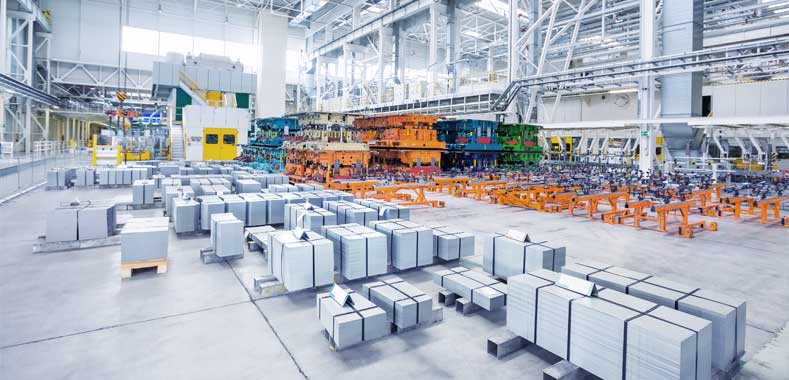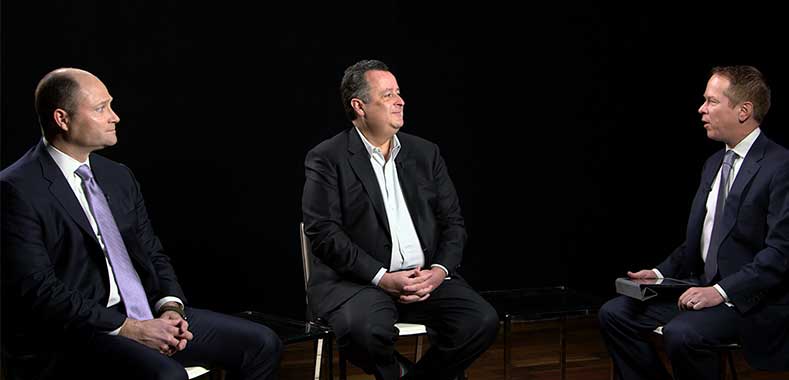A Tale of Two Labor Markets
Jobs are being created at a rapid clip in the U.S., but mostly jobs that require advanced skills and are located in key cities. Chief Economist, Joe Brusuelas of RSM, and Jason Thomas, Managing Director and Director of Research from The Carlyle Group, discuss the challenges that U.S. businesses face in hiring critical workers, as well as the challenge for U.S. policymakers in addressing disappearing low-skill jobs and retraining workers for the economy of the future.
Transcript Download Transcript
A Tale of Two Labor Markets
David Snow, Privcap:
Today, we’re joined by Joe Brusuelas of RSM and Jason Thomas of The Carlyle Group. Gentlemen, welcome to Privcap. Thanks for being here.
Both of you are economists and I’d love to talk about a very important topic in today’s economy, which is the labor market. Let’s start with a question for Joe: do you see evidence of the labor market tightening? If so, what’s the most important evidence?
Joe Brusuelas, RSM:
Yes. Over the last year, we’ve seen the decline in the unemployment rate by 0.5%. We only really need to add about 80,000 jobs per month to keep the unemployment rate stable and, in fact, what we’re seeing is an increase in hiring at around 187,000 per month. [That’s] more than twice the necessary to keep things stable, so in my estimation, we have a very tight labor market. Moreover, in our quarterly index—that’s our middle-market business index—when we survey our clients, the difficulty in finding skilled labor is the number one problem faced by middle-market firms.
Snow: Jason, as director of research for The Carlyle Group, what have you seen by way of the labor market?
Jason Thomas, The Carlyle Group:
I think there’s clear evidence of a skills mismatch, which is to say that there are more openings than one would expect, given the low unemployment rate, and there’s less wage inflation than one would expect, given the level of openings and the low unemployment rate. When you put those together, it means the jobs that are available generally require skills that are in relatively short supply and perhaps the people who are unemployed can’t fill those positions. So, you have very rapid growth in wages, in information technology and in some other segments that are two and a half times the overall growth in wages. That’s very unusual. When you look at the broader economy, there’s really very little evidence of any pick-up in wage gains. In fact, the trend growth in wages today is really close to where it was four years ago. We’re in a very different state of the labor market.
Brusuelas: Where we’re creating jobs, not only do we have a skills mismatch, we have a policy that’s misaligned. If you look at the life sciences or tech area, you see tens of thousands of job advertisements for Internet-of-Things engineer, cloud engineer, user experience. If you go into BLS’s NAICS codes, they’re not there.
We’re not even tracking them properly. And these are relatively high wage jobs, so in my estimation, not only because of the demographic shift, but because we haven’t quite caught up with the shift in the economy—especially the new economy—we’re not properly measuring or tracking that. And that has a depressing downward bias on overall wage growth, at least in the official statistics.
We have 10–12 major metro areas that are really propelling the economy forward, growing 3.5% to 4.5% per year. Then, in the middle of the country, where things are not good, they’re going at 0% to 1%.
It’s very different in Cleveland and Indianapolis and Kansas City compared to, say, Austin or Salt Lake or Provo. To me, the truth in the data is really varied in those metropolitan statistical areas and then across growth by sector. And that’s where I think policy has to be directed in order to help facilitate that long-term transition in the middle of the country where they may not grow at 3% or 4%, but if we can get them to 2%, that’s a real accomplishment.
Thomas: When I think back to 2011 through 2013, there was no place better to invest than the United States, because you had a relatively weak currency and relatively slow wage growth coming out of the recession. And, when you look at the foreign competitors largely in emerging markets, they had sustained wage gains at about a 6% to 7% annualized rate from essentially 2005 all the way through to 2013.
The relative cost of moving your business to the U.S. fell and that’s a key reason why the U.S. is so far ahead of other economies in terms of this expansion in this business cycle. But I think we are at a stage where, again, because the dollar is adjusted upward, we’re perhaps acting as a check on wage gains, because it would render some of those businesses less competitive relative to foreign competitors.
Brusuelas: That’s right. A stronger dollar equals lower inflation, and lower inflation in productivity are the two major, non-structural forces that are suppressing wage gains. Someone who retires at 70 years old is making $80,000 and replaced by somebody who’s 35 who’s paid $31.50—that’s good for the kid, right? But on aggregate statistics, when you’ve got an accelerating number of baby boomers retiring each day and there’s not enough replacement supply, what happens? Well, in the aggregate statistics, you’re going to be stuck between 2% and 2.5%. Now, that’s not the reality once you control for the retirees, so you get a very different economy and very different industries. Let’s take retail: the disruption in retail has more to do with replacement of workers by technology. So, wages are going to be going down. In other areas of the economy, the new economy, it’s a very different reaction function and there’s a shortage of skilled people, so it is bidding wages up.
Snow: Let’s stick on retail for a bit, because that’s obviously a huge part of the economy and one that is being completely transformed by technology. What’s going to happen to those hundreds of thousands of jobs that are tied to brick–and–mortar retailers that are endangered now and could go away completely?
Thomas: We’re hundreds of years into an economy where people are worried about what would happen with agricultural workers as they went from 50% of the workforce down to 2%, so generally the economy has grown in ways where there’s new job openings and people pulled in to new sectors and higher–productivity employment. History cautions us not to worry too much about disruption in the individual sector, because generally there is sufficient overall growth to pull those—to find great new jobs in different sectors in the economy.
Brusuelas: Unemployment is a problem if it’s your neighbors that are unemployed—it’s a disaster if it’s you. In the short to medium–term, there’s going to be a transition that takes place, where people who work in retail are going to go to work in portions of the value-and–supply chains. The second order of problems in commercial real estate—that will follow and they will follow, and they will be sizable.
Snow: Let’s move to a major sector of the economy that actually, from what I read, is enjoying somewhat of a renaissance: the manufacturing sector in the U.S. The jobs being created there are, in many cases, related to automation. How do you see the impact of automation affecting the labor market within manufacturing?
Thomas: Right now, if you look at robotics, for example, there is a very high degree of penetration in the auto sector. But, outside of autos in manufacturing, there’s really not much in the way of robotics. It’s a relatively low number of robots per worker. So, that’s something that is going to have much greater diffusion of those sorts of technologies. Secondly, I would say that the rebound in manufacturing looks to be very much tied to the rebound in energy development, domestically.
Snow: I want to ask about low-skill jobs. There’s a problem in this country with the evaporation of many of those jobs, whether they’re going overseas or they’re in a struggling industry like retail. Do we have the training and education infrastructure in place to allow these people to get re-trained and placed in a different industry to address this mismatch in skills or is that going to be a challenge over the interim?
Brusuelas: That’s going to be an enormous challenge, because we don’t have a national program for re-training. Nor do I think we should. I think it should be done at the state and local levels, in conjunction with junior colleges and local apprenticeship programs where businesses partner with high schools and junior colleges to provide that apprenticeship pipeline into meaningful work.
Snow: Do you see a challenge in the many displaced workers in the U.S., finding their way to these pockets of growth?
Thomas: In the short run, this…is a huge challenge that shouldn’t be minimized. The second point I would make is that we spend so much time thinking about the European Union and how different the economies are and the numbers of the Euro area, and…how difficult it is for a single central bank to set monetary policy for such different economies.
But that’s actually not so dissimilar from what we’re looking at in the U.S., when we look at the fast-growing 12 metro areas that you mentioned and compare it to the economy as a whole, and when you look at education and skill levels and how they differ across metro areas. You have a single central bank—the Federal Reserve—that has to set policy for an economy that looks more and more different each year and this is a policymaking challenge that extends beyond labor, re-training and those issues to even broader macro questions like the appropriate interest rate setting for monetary policy.
Snow: So, what comes next? We know that there is a tightening in the labor market, especially in certain sectors of the economy. What tend to be knock-on effects on that and what are you two anticipating?
Brusuelas: I’m anticipating that we’ll move 4% in the unemployment rate by the end of the first quarter of 2018. I would like to see significant tax reform—not tax cuts, but tax reform—that will unlock value in corporations with respect to increased outlays on software capital and intellectual property.
Thomas: We’ve been in a consumption-led expansion for a number of years and it’s really time for that to turn into an investment-led expansion. We need to increase the capital per worker through investment, business investment, and it’s mostly going to be an intangibles investment, but that needs to accelerate meaningfully. If it does, I think this expansion could last several more years and, actually, the pace of growth could accelerate somewhat. At this point, I think there’s more reason to be pessimistic than optimistic with respect to policy change.
Snow: Based on political analysis?
Thomas: Yes, I would say that—given where we are with both the administration and Congress—we seem to be a bit behind where I’d like to be with respect to formulating and introducing a plan, having it marked up in committee and having it debated more broadly in the two houses of Congress. Again, I’m very hopeful for 2018, but at this point, I would say that I’m somewhat discouraged, at least about the pace at which this issue has been addressed.











